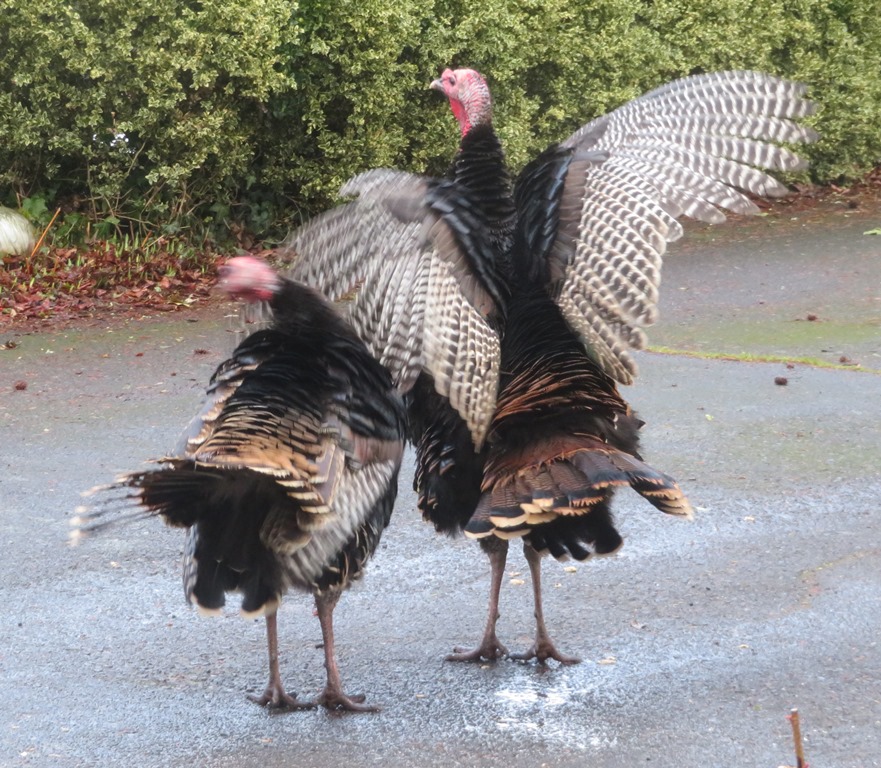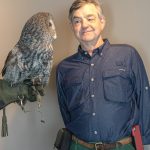There are at least two flocks of wild turkeys roaming Salem. And since the flocks are not cohesive at all seasons, there could be turkeys in several locations around the city at the same time.
Recently I have been seeing a flock of 13 juveniles in the neighborhood around Clark Creek Park in southeast Salem. Last fall this flock included three adult hens who have since gone on vacation without the pushy teenagers. But those three hens are out there somewhere. And then there are the male turkeys. They haven’t left town, just staying in their fraternal order until mating season this spring.

There is a Facebook page, Salem Turkey Tracker that shares turkey sightings in Salem. The sightings cited online indicate one flock that ranges as far north as D Street in Salem and as far south as Ewald Street. Landmarks included in this territory include Bush’s Pasture Park, Willamette University, South Salem High School and Morningside Elementary School. There is no evidence of this flock along Interstate 5 or west of Commercial Street. In west Salem the sightings are all around Glen Creek Road and south of Orchard Heights Park.
The turkeys will only breed once each year. A single hen will usually lay from 10 to 15 eggs. The nest will be on the ground, so some place safe from dogs, coyotes and bobcats is selected. Sometimes females will share a nest.

All brooding and young-rearing is done by the hens. The males are off strutting around and fanning their huge tails. Like baby chickens the hatchlings can run immediately but won’t fly for up to two weeks. The downy young are pale and don’t get those dark, colorful adult-style feathers for several weeks. By fall the young are still not full size, but will have begun to show the adult plumage pattern. Those denser, heavier feathers will enable them to cope with winter weather.
Most of time turkeys amble around. Flight is reserved for escaping danger and lifting into dense trees for night-time roosting. Until the young can fly pretty well, these urban turkeys seem to stick to areas with less traffic, fewer dogs, less danger. Once the young can fly straight up into a Douglas fir when a dog threatens, the mothers and young begin to forage in flocks through parks and residential areas. It is normal to see a flock slowly cross a street, people in vehicles stopped in both directions. These birds will also sometimes fly onto a roof for safety or, maybe, just to look around.
Here is my original piece on the local turkeys and how they arrived in Oregon.
For information about upcoming Salem Audubon programs and activities, see www.salemaudubon.org, or Salem Audubon’s Facebook page.
Harry Fuller is an Oregon birder and natural history author of “Freeway Birding” and the newly-published “Birding Harney County.” He is a member of the Salem Audubon Society. Contact him at [email protected] or atowhee.blog. His “Some Fascinating Things About Birds” column appears regularly in Salem Reporter.
SUPPORT OUR WORK – We depend on subscribers for resources to report on Salem with care and depth, fairness and accuracy. Subscribe today to get our daily newsletters and more. Click I want to subscribe!

Harry Fuller is an Oregon birder and natural history author of three books: “Freeway Birding,” "Great Gray Owls of California, Oregon and Washington," and "San Francisco's Natural History--Sand Dunes to Streetcars." He leads birding trips for the Malheur Field Station. He is a member of the Salem Audubon Society, and leads bird trips locally. Harry has just published a new book, BIrding Harney County.










